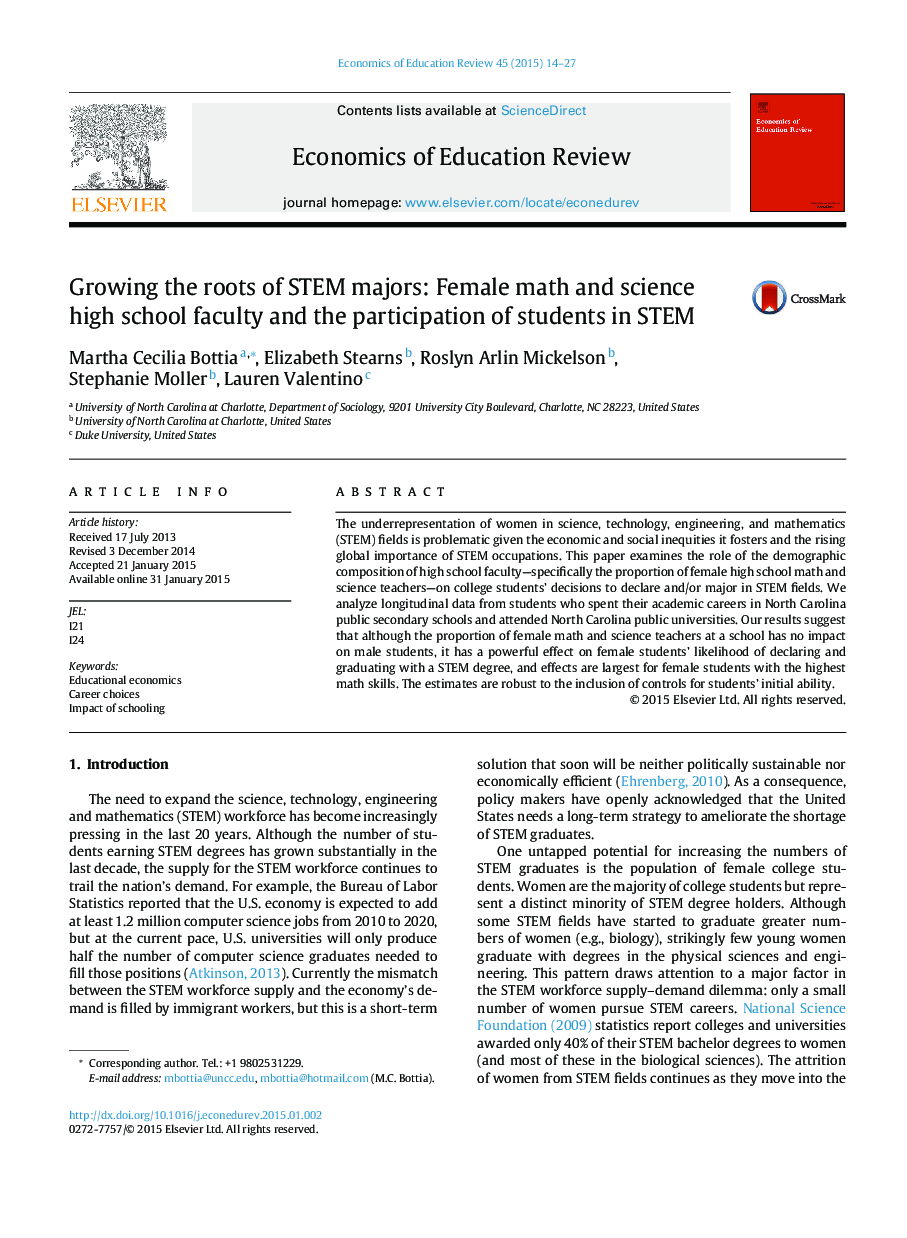| Article ID | Journal | Published Year | Pages | File Type |
|---|---|---|---|---|
| 354316 | Economics of Education Review | 2015 | 14 Pages |
•Female high school STEM teachers are key to girls’ decisions to major in STEM.•Larger shares of female HS STEM teachers raise girls’ odds of majoring in STEM.•Effects are largest for female students with the highest math skills.•Boys’ odds of majoring in STEM are unaffected by shares of female HS STEM teachers.
The underrepresentation of women in science, technology, engineering, and mathematics (STEM) fields is problematic given the economic and social inequities it fosters and the rising global importance of STEM occupations. This paper examines the role of the demographic composition of high school faculty—specifically the proportion of female high school math and science teachers—on college students’ decisions to declare and/or major in STEM fields. We analyze longitudinal data from students who spent their academic careers in North Carolina public secondary schools and attended North Carolina public universities. Our results suggest that although the proportion of female math and science teachers at a school has no impact on male students, it has a powerful effect on female students’ likelihood of declaring and graduating with a STEM degree, and effects are largest for female students with the highest math skills. The estimates are robust to the inclusion of controls for students’ initial ability.
